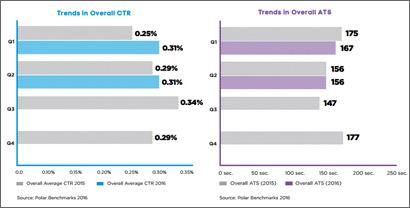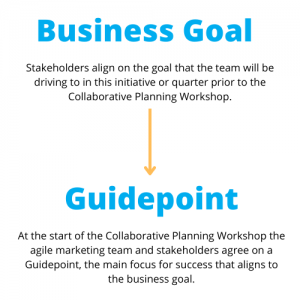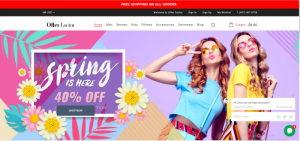by Laurie Sullivan, Staff Writer @lauriesullivan, August 9, 2016
About 48% of views that a campaign will gain occur in its first week after it goes live, followed by 22% during the second week and 90% happening within the first month, according to a study on content released Tuesday.
Click-through rates (CTRs) on mobile devices performed 19% better in Q2 2016, and tablets performed 29% higher, on average compared with the year-ago quarter, according to the Polar benchmark report. The Toronto-based company built a business on native advertising that looks more like content.
The benchmark report found that the average time spent (ATS) tells the opposite story. While mobile and tablet performed 13% and 21% below the average, respectively, desktop ATS performed 20% better than the average of 156 seconds.
Think of native content as a way to support paid-search and organic-search campaigns. Consumers still prefer bite-sized content on mobile devices, while desktop users typically have more time to consume larger and longer content experiences.
The number of active campaigns grew more than 75% in second-quarter 2016 compared with the year-ago quarter among Polar clients. Polar defines “active campaigns” as a collection of active creatives supporting one creative in an ad campaign that generates more than 1,000 impressions.
The number for the quarter was also higher than the amount of campaigns that ran in the fourth quarter of 2015, which usually produces the highest number per quarter because of the holidays. In fact, the total number of active creatives rose 7%.
The data — aggregated from more than 2,000 properties that Polar supports, such as Web sites and mobile apps across more than 65 publishers and media companies — provides a global view into performance metrics across a diverse set of premium publishers such as Huffington Post, AOL, Conde Nast, The Telegraph, Gannett, News Corp. and The Economist.
Polar’s Q2 Benchmarks Report on Branded Content latest benchmarks report provides analysis into performance trends across three device types, eight countries and geographic regions, and six major publisher verticals.
The report suggests that while brands are producing less creatives per campaign, they are creating an increasing number of variations to more finely target potential customers. Variations come in the form of headlines, copy and images to find the best performers.
The number of variables for each active creative has more than tripled during the past six quarters, according to the data. Similarly, the average number of variants per creative has also nearly doubled during the quarter.
Despite all these changes, the overall average click-through rate (CTR) remained steady at 0.31% throughout the first half of 2016, while the average time spent (ATS) fell slightly in Q2 compared with the first quarter in the year. When comparing the second quarter of 2016 to second-quarter 2015, CTR rose 7% and ATS was unchanged in the year-ago quarter.
The report also details the number of CTRs per geography. The United States maintained a consistent CTR throughout the first half of 2016, about 0.31%. The U.S. is the only country and geographic region to beat the overall ATS of 156 seconds. American audiences spent just under 3 minutes reading branded content, which is roughly 12% higher than the global average.
United Kingdom CTRs performed 10% better than the average, up 70% compared with 2015.
UK audiences are typically spending just over 2 minutes engaging with branded content. ATS performance in 2016 came in at 124 seconds compared with 132 in the year-ago quarter.
United Arab Emirates improved CTRs in second-quarter 2016, performing 19 percent better than the overall average. UAE’s CTR in Q1 and Q2 of 2016 were 59% and 76% higher than comparable quarters in 2015, respectively.
Similar to CTR, ATS in 2016 has also been very strong for the UAE, with Q2 boasting time spent at more than 2 minutes, up 5% compared with the year-ago quarter.
MediaPost.com: Search Marketing Daily
(82)
Report Post








